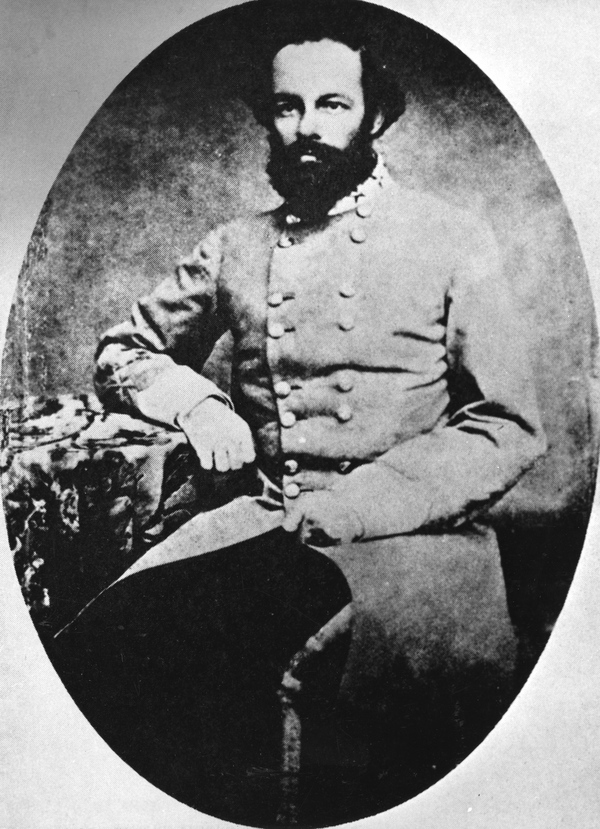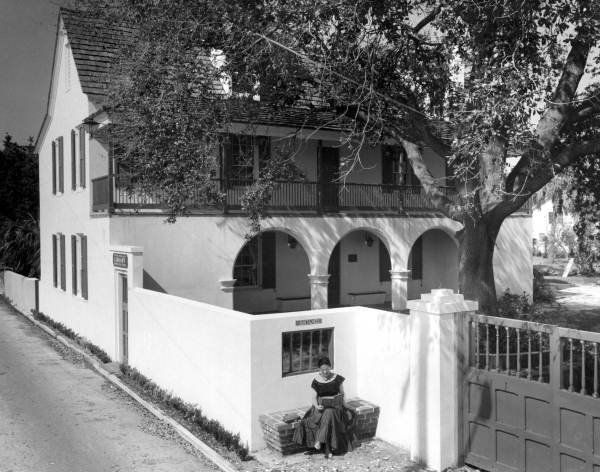Description of previous item
Description of next item
Florida and the Civil War (January 1863)
Published January 1, 2013 by Florida Memory
Florida's Most Famous General Never Fought in Florida
On January 14, 1863, the Confederate War Department assigned Lieutenant General Edmund Kirby Smith command of Confederate forces in Texas and the area of Louisiana west of the Mississippi River. Within a month, Confederate president Jefferson Davis expanded Kirby's command to include all of the territory within the Department of the Trans-Mississippi: Arkansas, Missouri, West Louisiana, Texas, the Indian Territory (today's Oklahoma), and the Arizona Territory. For the next two-and-a-half years, Smith directed Confederate military, administrative, and economic affairs in the Trans-Mississippi, which had to become self-sufficient after the fall of Vicksburg in July 1863 cut off Smith's command from the rest of the Confederacy. Smith's position as commander of the Trans-Mississippi or "Kirby Smithdom" as the area became known, made him one of the most important and powerful Confederate generals of the Civil War; however, his name is relatively unknown today compared to the pantheon of generals in gray that includes such names as Robert E. Lee, Thomas J. "Stonewall" Jackson, P. G. T. Beauregard, and Joseph E. Johnston. Smith's responsibilities in the West and his earlier exploits during the war make him the most significant of Florida's Civil War generals.
Edmund Kirby Smith was born in St. Augustine, Florida, on May 16, 1824. Smith's father, Joseph Lee Smith, served as a federal judge in the newly acquired U.S. territory. He installed his family in the Segui House on Aviles Street in St. Augustine, renting the house from the descendants of Bernardo Segui. Due to General Smith's fame from the Civil War, the house is now known as the Segui-Smith House and contains St. Augustine's historical library. Edmund left St. Augustine in 1836 to attend Benjamin Hollowell's school in Alexandria, Virginia, in preparation for an appointment to the United States Military Academy at West Point. He obtained the appointment and attended West Point from 1841-1845. Upon graduation, Edmund entered the Fifth Infantry Regiment as a second lieutenant and was serving in that unit when the United States went to war against Mexico. Edmund was part of the victorious army that captured Mexico City and participated in the celebrations that followed Mexico's surrender in February 1848. Unfortunately, Edmund's brother, Captain Ephraim Kirby Smith, did not survive the war; he was killed leading his men during the Battle of Chapultepec on September 8, 1847. In order to distinguish himself from his brother, Edmund went by his middle name "Kirby" and signed all of his future correspondence as "E. Kirby Smith," the name that he came to be known by during the Civil War.
Kirby Smith was stationed with the Second U.S. Cavalry Regiment in West Texas in February 1861, when Texas joined six other Southern states to form the Confederate States of America. After returning to Florida for a brief visit, the Confederate Army assigned the now Lieutenant-Colonel Smith to Virginia, where he served under the command of General Joseph E. Johnston. By the time of the Battle of Bull Run on July 21, 1861, Smith commanded a brigade as a brigadier general and rushed to support General Stonewall Jackson's men at the height of the battle. Smith's brigade helped counter the Union attack and enabled the Confederates to turn a likely defeat into victory. Wounded during the fighting, Smith was reported as killed in action. His family began to mourn his death before receiving news that he had survived and was recovering in Lynchburg, Virginia.
After his recovery, the Confederate War Department assigned Smith to take command of forces in all of Florida east of Pensacola. Before he could begin his move, however, the department decided he could be of more use if he remained in Virginia. Smith stayed in Virginia until March 1862, when he was reassigned to command the Department of East Tennessee. Centered at Knoxville, the Department of East Tennessee became the right-wing of the Confederate invasion of Kentucky in September 1862. Although the invasion achieved some early success, poor coordination between Smith's army and Braxton Bragg's Army of Tennessee failed to defeat the larger Union armies that contested the invasion. By October 24, Smith was back in Knoxville, where his disillusionment with the war almost led him to resign his command. It was during this time that Smith received news of his promotion to lieutenant general. Within two months, Jefferson Davis, upon the recommendation of Robert E. Lee, decided Smith was the general he needed to take command of Confederate forces in the West. Smith took up his appointment as commander of the Trans-Mississippi on February 9, 1863.
The headquarters for his new department was located in Alexandria, Louisiana. With forces that never exceeded about 70,000 men, Smith was entrusted with the defense of the entire Trans-Mississippi. He was also expected to relieve the Union threat to Vicksburg by conducting offensive operations along the Mississippi River. Smith directed his forces to invade Missouri and attack Union strongholds in Arkansas, but these efforts failed to dislodge the Federals or save Vicksburg, which surrendered to the Union on July 4, 1863. Vicksburg's fall forced the Trans-Mississippi to rely on its own resources. Smith devoted much of his time addressing the department's economic and administrative problems. Jefferson Davis gave him full authority to govern the region as he saw fit. Due to his efforts and the incompetence of Union general Nathaniel P. Banks, Smith's forces were able to turn back a Union invasion of East Texas in 1864. By 1865, however, large scale desertions brought on by the increasing likelihood that the Confederacy would lose the war, depleted resources, and ongoing Indian raids severely weakened Smith's department. Although he would be the last Confederate commander to surrender to the Union (June 2, 1865), the Confederate hold on the Trans-Mississippi became increasingly untenable in the last months of the war. There was little Smith could do to resist the inevitable defeat.
Kirby Smith outlived all the other top-ranked Confederate generals. After a post-war career as a businessman and educator (president of the University of Nashville and professor of mathematics at the University of the South at Sewanee, Tennessee), Smith died at Sewanee on March 28, 1893. Although he is buried in Tennessee, Smith's native state did not forget him. In 1922, a bronze statue of Smith was placed in the National Statuary Hall in the U.S. Capitol, where it stood along with the marble statue of inventor John Gorrie as Florida's contribution to the Hall. Kirby Smith's statue remains in the Capitol to this day.
Cite This Article
Chicago Manual of Style
(17th Edition)Florida Memory. "Florida and the Civil War (January 1863)." Floridiana, 2013. https://www.floridamemory.com/items/show/257496.
MLA
(9th Edition)Florida Memory. "Florida and the Civil War (January 1863)." Floridiana, 2013, https://www.floridamemory.com/items/show/257496. Accessed December 30, 2025.
APA
(7th Edition)Florida Memory. (2013, January 1). Florida and the Civil War (January 1863). Floridiana. Retrieved from https://www.floridamemory.com/items/show/257496

 Listen: The Bluegrass & Old-Time Program
Listen: The Bluegrass & Old-Time Program

